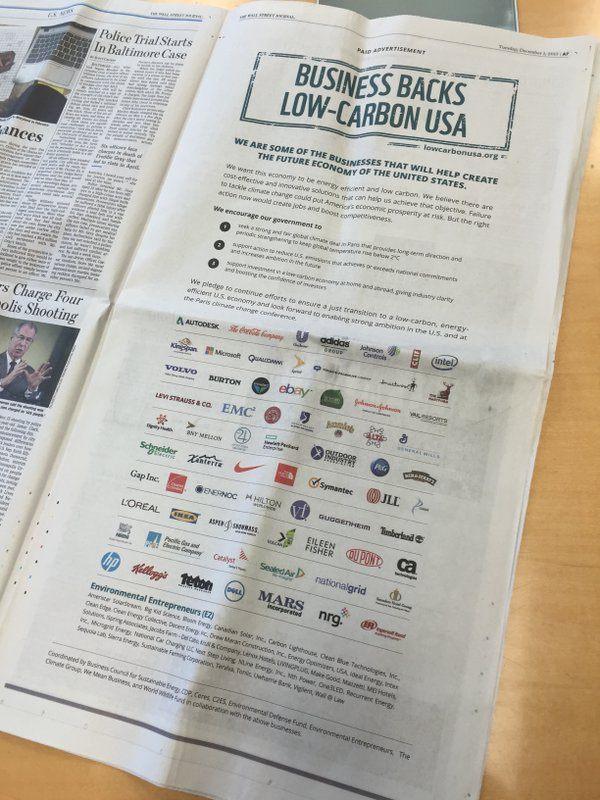Porsche gives green light to first 100% electric model


Luxury German car maker Porsche is investing close to a billion euros in its first 100% electrically powered model.
The project called 'Mission E' was described by Dr. Oliver Blume, chairman of Porsche's Executive Board, as the "beginning a new chapter in the history of the sports car."
The investment will mean 1,000 new jobs for the Stuttgart operation with the vehicle due to launch at the end of the decade.
The Mission E concept car was premiered at the Frankfurt International Motor Show (IAA) earlier this year. The four-door car with four individual seats has a system power output of over 600 hp (440 kW) which means that it will achieve both acceleration of 0 to 100 km/h in under 3.5 seconds and a range of more than 500 kilometres. Charged via an 800-volt charger unit specially developed for the car, which is twice as powerful as current quick-charge systems, the lithium-ion batteries integrated within the vehicle floor have enough power again for 8% of the range after just 15 minutes.
Dr. Wolfgang Porsche, chairman of the Supervisory Board of Porsche AG commented: "With Mission E, we are making a clear statement about the future of the brand. Even in a greatly changing motoring world, Porsche will maintain its front-row position with this fascinating sports car."
More big names sign up to renewable power commitment


BMW Group, Coca-Cola Enterprises, International Flavors & Fragrances Inc. (IFF), Nordea Bank AB, Pearson PLC and Swiss Post are the latest corporates to sign up to RE100, the global commitment to source 100% of their electricity from renewable energy.
The wide-ranging businesses join a wave of world leading ICT companies including Microsoft, Adobe and Google who have also joined, taking the total number of committed companies to 53.
New research from The Climate Group and CDP shows that when today’s group of 53 companies are 100% powered by renewables, they will create demand for 90.1TWh of renewable electricity. That’s around 0.4% of global electricity or 1% of electricity used by industry – more than enough to power Hong Kong and Singapore combined. The switch would save around 56Mt of CO2 every year – broadly the same as Morocco’s emissions.
Emily Farnworth, RE100 Campaign Director at The Climate Group, said: “Many companies are switching to renewable power at a remarkable rate, and encouraging their suppliers and customers to do the same. Our analysis of the private sector’s electricity consumption and carbon emissions indicated that a switch to power from renewable sources could cut global CO2 by nearly 15%."
“By acting together, the world’s leading companies are creating a thriving renewable energy market that will help keep a global temperature rise below two degrees."
Turn deforestation pledges into action, urges CDP


Corporate momentum on tackling deforestation is at risk of stalling warns new analysis from CDP, the global non-profit which collates environmental data on behalf of investors.
While seven in 10 companies have commitments to address deforestation, few are translating these into meaningful actions, says CDP.
The report, Realizing zero-deforestation: Transforming supply chains for the future, was launched at the Global Landscapes Forum in Paris. The findings suggest there is a widespread understanding of the business case for action, with nearly 90% of companies identifying commercial opportunities from addressing deforestation.
However, without relevant procurement strategies and policies, commitments are not being implemented fast enough. Half (50%) the companies with commitments to source certified soy are yet to get any into their supply chains. For palm oil this is the case for over a quarter (26%) of companies. And while over three quarters (77%) of manufacturers and retailers have standards for sourcing commodities identified as among the largest drivers of deforestation, just over a quarter (26%) provide suppliers with training or workshops on this issue.
CDP’s global forests report 2015 is produced on behalf of 298 investors with US$19 trillion in assets. It analyzes disclosures from 171 of the world’s largest companies – including Cargill, Mars and Unilever – to establish how they are managing four key commodities linked to deforestation: cattle products, palm oil, timber products and soy.
Katie McCoy, head of forests at CDP, commented: “In an era of climate change, protecting our forests is one of the best things we can do to prevent dangerous global warming. Reaching a climate change agreement in Paris is therefore critical for creating a level playing field for companies already striving to address deforestation. While policymakers have their role to play, companies too must enable suppliers to join their efforts to protect forests. The long-term viability of agricultural production, food security and climate action depend on this.”
Can Copenhagen be Exorcized? COP21 Moves Into High Gear


After a week of negotiators working in "spin-off" groups, the Ad Hoc Working Group on the Durban Platform (ADP) completed their work on Saturday with the final compilation of the Paris Outcome draft text officially transmitted to the COP, ready for ministerial negotiation beginning on Monday.
Typically, spirits in the plenary hall and meeting rooms rose and fell throughout the week. Friday began with reports of tension among delegates as they "frantically" reviewed the draft texts from the spin-off groups compiled overnight by the ADP co-chairs. With the Saturday deadline looming, talk of "ghosts of past COPs" remerged, particularly over fears of a loss of transparency in the text, with some delegates worried their main concerns would end up on the "bottom of the pile."
But Saturday dawned sunny in Paris, and with it the mood of the delegates. The tensions had morphed into a much more "harmonious mood," with reports of one delegate saying that parties has managed to "exorcise" the lack of transparency that shrouded negotiations in Copenhagen.
Thus in a relatively convivial mood, the ADP completed it four years of work began in Durban at COP17, handing over the draft text agreement to COP president Laurent Fabius.
A groundswell of global support
"We're halfway there" said Rhea Suh of the National Resources Defense Council at a news conference on Saturday afternoon. "What a first week this has been. For the first time in history we have tabled serious and systematic action commitments from (at least) 170 countries representing 90 percent of the world's emitters"
Suh said the commitments codified in the proposed Paris Outcome point in "one direction and one direction alone...
"A clean energy revolution that is already attracting unprecedented levels of financing and entrepreneurialism around the world"
Mindy Lubber of Ceres told reporters on Saturday that the "collective will from all corners of the world to tackle this issue is palpable. Unlike anything we have ever seen before."
"I am optimistic that it will provide the momentum needed to cross the finish line with an agreement that puts us on a clear path to a sustainable, low carbon global future," said Luber.
Acknowledging the difficult path that still lay ahead in the next week, Lubber added that "we cannot lose sight of where we are today."
'We will have some bickering," said Lubber, "some hand-wringing over the next several days. But I believe, based on everything we're seeing here, that the world is ready and the time is now."
Lubber stressed the groundswell of support from beyond government commitments is the key driver of the transformative change reflected in Paris.
"The debate is changing, the message is changing and the messengers are piling on, Lubber said. "When we were in Copenhagen it was about the environment. Here it is about the environment... but it is about health, it is about national security, and this is about the economy as well."
The business community has found its collective voice, Lubber said. "They are saying quite publicly that they want climate action today, not tomorrow."
Indeed, COP21 looks nothing like COP15, where business, to the extent it was represented in Copenhagen, was outside, almost beside the point. In Paris it is cities, states, business and the private sector that inhabit Le Bourget in force, ready and willing to drive the conversation as negotiations move to the next level.
Taking a breath at Le Bourget
With Sunday comes relative quiet here at Le Bourget, as delegates, NGOs and many (but not all) journalists take a breath before ministers arrive in the morning to push the ball the last bit over the hill to an agreement. There is a sense of guarded optimism but a realization that Copenhagen may yet come home to roost, despite everyone's avowed desire otherwise. The same issues lurk; finance, loss and damage, transparency, differentiation, a mechanism to "ratchet" ambition above current committment.
Right now it seems to me that, whatever the Paris Outcome is, the haunted halls of Copenhagen will remain quiet as the transformation takes shape takes shape here in Paris, even if kicking and screaming by some.
Image credit: Nicolas Bonnement, courtesy flickr
We Need to 'Re-Wire' the Labor Market


By Byron Auguste and Tyra Mariani
How do we ensure that motivated Americans get the skills they need to find meaningful work, to thrive in the workplace, and to move forward in our job market?
We need to ask deeper questions about our labor market’s role in upward mobility (or immobility), because the way we assess unemployment and underemployment doesn’t tell the full story of the U.S. economy’s loss of dynamism in the past 15 years. For example, how many people are engaged by the work they do, and see a career path ahead of them? Who can clearly say: If I make the extra effort to do X, I can learn Y, and then be hired or promoted into job Z? How many can confidently quit their current job to take a better one?
Too many Americans lack that confidence, because when it comes to work, they are “stuck” without a way to translate their best efforts into economic progress. This situation undermines U.S. economic dynamism and growth, because human capital — the most valuable asset on America’s economic balance sheet — is not realizing its full value.
Right now our job market works best for those Americans who follow conventional paths to four-year college degrees and who have the social capital and mentorship that encourages employers to take a chance on hiring, training and advancing them. It works poorly for the growing number of people whose journeys are less linear or gilded, including the 35 million people with “some college” but no degree, mid-career industry switchers, un-credentialed workers who mastered their skills on the job, full-time parents re-entering the workforce, the long-term unemployed, skilled immigrants, and young people reaching for the first rungs on the career ladder.
With U.S. job openings at their highest levels in at least 15 years, how can so many American workers find themselves so stuck? It seems like a paradox, but a few statistics and recent human-resource analytics research offer some clues.
In the United States, voluntary job changes — quitting to seek a better job — are down by 28 percent since 2000. While only 19 percent of administrative assistants have four-year college degrees, consulting firm Burning Glass found that almost two-thirds of new assistant jobs require a four-year degree just to be considered. Less educated workers receive only half the formal on-the-job training that more educated workers receive. Employers are only half as likely to grant an interview to a long-term unemployed candidate when compared to someone more recently employed with identical education, skills and experience — yet, an Evolv study of 20,000 hires found that this distinction made no difference in likely job performance.
What these startling data — and the dysfunctions they reveal — all have in common is an origin on the “demand” side of the U.S. labor market: how employers recruit, hire, train and promote. Yet most policies that aim to improve employment outcomes focus on the “supply side” — education and job training. These efforts are important, but they can’t “close the skills gap” without demand-side reforms. We need smarter employer practices and the partnerships and public policies to support them.
Re-wiring the demand side of U.S. labor market is the goal of Opportunity@Work, our civic enterprise based at New America. Employers are now experiencing a classic market failure, in which hiring and training practices are inadvertently limiting the collective talent pipeline and creating “skills mismatches” with economy-wide ripple effects. These mismatches are a key reason why nearly half of U.S. employers report difficulty hiring employees who have the skills their companies need to compete.
While focusing on the demand side, we aren’t overlooking the many employers who are already investing in workforce skills by partnering with educators or unions to shape vocational training curricula or offering apprenticeships or other work-based learning. Some are also innovating more inclusive ways to identify talent. There are now many pockets of success to emulate, but adopting these strategies remains too slow, costly and complex — as each one invents (or re-invents) its own approach.
Re-wiring the U.S. labor market at scale will require more than replicating best practices. We need to build a flexible, dynamic and common “operating system” for the labor market that employers, educators, workers and job-seekers can plug into as a tool to better align their own investments with each other’s priorities, recognize potential and respond to market needs. If achieved at scale, such alignment would result in higher-value education and training programs; more inclusive and better-matched pools of candidates to hire; and a more engaged and productive workforce.
With such a broad goal in our sights, we’re starting with information technology jobs, which constitute 12 percent of today’s open jobs — over 680,000 of them – in the U.S. As part of the TechHire Initiative President Barack Obama launched in March 2015, we have created a learning network for 35 communities from Wilmington to Chattanooga to Albuquerque. This network will help align employers to hire for middle-class IT jobs based on competence and readiness, rather than pedigree.
When President Obama announced TechHire he said, “If you can do the job, you should get the job.” LaShana Lewis could do the job, but after being unable to get a job interview for the IT work that was her passion, she worked as a bus driver and in customer support for over a decade. Today, Lewis is a systems engineer at MasterCard, after being matched by hiring on-ramp LaunchCode, a TechHire partner in St. Louis that connects non-traditional job seekers to job openings.
Opportunity@Work will be part of the movement to realize the full capabilities of our country’s leading institutions of technology, education and training, business services, and workforce development to enable employers to institute “hire when ready” practices in communities nationwide, to reach millions of Americans who could learn and excel at jobs that employers struggle to fill. Talent like Lewis' should never be invisible. Bringing potential like hers out into the open is essential to bringing America’s founding promise of opportunity through work into the 21st century.
Image credit: Flickr/Steve Wilson
Byron Auguste is the Co-Founder & MD of @OpptyatWork, ex- Deputy Director of @WhiteHouse NEC, ex-Director of @McKinsey, co-founder @HopeStreetGroup, and featured speaker at the upcoming Closing The Gap: Solutions For An Inclusive Economy".
Tackling Our Urbanized Future: Solutions from COP21


The COP21 climate talks in Paris run the gamut, as delegates, state and local governments, business and NGO leaders, and policy makers discuss everything from sustainable agriculture and forestry to divestment and climate finance. All of these discussions are aimed at a single goal: to limit global temperature rise to 2 degrees Celsius by 2100, which scientists consider to be the tipping point to avert the most catastrophic effects of climate change.
But when we look decades into the future, it's important to remember how our world will change. For example, in 1950, 30 percent of the world's population lived in urban areas. By 2050, nearly 70 percent will call urban areas home.
Our rapidly urbanizing world presents both challenges and opportunities. City-dwellers tend to live more sustainable lifestyles overall, shunning oversized homes for flats, condos and duplexes, and often ditching cars in favor of public transportation. But as cities around the world face massive population booms, governments must figure out to how to house all of their new residents, maintain a good quality of life for them, and do all of this without an undue impact on the planet.
This presents a significant dilemma, as construction is historically a very dirty industry: The buildings and construction sector is responsible for 30 percent of global carbon dioxide emissions. Fortunately, it doesn't have to be this way.
The industry has the potential to avoid about 3.2 gigatons of CO2 equivalent by 2050 through mainstreaming state-of-the-art policies and technologies that are already available today, experts said during a media briefing on Thursday for the Lima-Paris Action Agenda's Focus on Buildings. In fact, they added, reducing energy demand in the building sector is one of the most cost-effective strategies for achieving significant worldwide greenhouse gas reductions.
"This sector has a huge potential to provide solutions," Naoko Ishii, CEO and chairperson for the Global Environment Facility, said on Thursday. "By 2050, building demand can be reduced by a third if already-known technologies and best practices are fully implemented."
So, why is this not happening already? "Because," Ishii continued, "if we don't do anything and just sit and wait, these stakeholders, particularly city regulators and businesses, are not always coming together."
Under the Lima-Paris Action Agenda (LPAA), 18 countries and more than 60 organizations have set out to change that -- launching an unprecedented Global Alliance for Buildings and Construction to speed up and scale up the sector’s potential to reduce its emissions. This is huge news for a crucial sector that already employs around 110 million people, a number that will only grow in the coming years, said Ibrahim Thiaw, assistant secretary-general of the United Nations and deputy executive director of the U.N. Environment Program.
"What we do in the building sector will be crucial for not only developing countries but for cities around the world," Thiaw said.
Coming together for better cities
Real estate represents about 50 percent of global wealth. Creating this transformation requires investing around an additional US$220 billion by 2020 – an almost 50 percent increase on 2014 investment in energy-efficient buildings – but less than 4 percent of the current total global annual investment in construction activity (pegged at $8.5 trillion annually). Returns on this investment could be as high as 124 percent if investments in ambitious policy and technology actions are made now, the LPAA said.
Next-generation cities could mean an even bigger financial boon in the form of savings for local governments: The global economy could save $18 trillion by making cities more efficient by 2050 -- as $7 trillion from improving buildings and the remainder coming from improvements to the transportation sector, Ishii explained.
As of today, 91 countries have included elements of commitments, national programs, or projects and plans relating to buildings in their Intended Nationally Determined Contributions (INDCs), the declarations by countries of the commitments they're prepared to make coming into Paris.
With support and greater awareness, many more may realize the potential for the building sector to contribute to realizing national targets, the LPAA said. Yet, as Ishii pointed out, the building sector is very local and needs to align many different actors, which is a primary objective of the new alliance.
Pierre-André de Chalendar, CEO of Saint Gobain, agreed: "What is very interesting about the building sector is that there are indeed solutions. We know how to make buildings that consume less energy. This technology already exists. Why doesn't it work? It's because we don't work together enough -- and this is why this alliance is so important."
Equity takes center stage
While creating more efficient buildings, and even net-positive structures and smart cities, is important, experts also underscored the need for equity in rolling out new technologies -- which will be a key focus of the alliance.
"New buildings have all of these new standards, but we have to think about people living their daily lives. They can't necessarily afford these new technologies ... right now they're using coal for heating," said Mexico City Mayor Miguel Ángel Mancera. "So, what we need to do now is not create unequal societies, but we have to use these technologies and make them available for everybody, so that we can produce social housing with all this technology in it."
Mohammed Nabil Benabdallah, minister of housing and cities for Morocco, which plans to surge its provision of affordable social housing from 1.2 million units to 5 million, agreed: "We need to work so that we can use intelligence and smarts to ... improve access to housing and to make sure that we improve conditions in that housing," he said at COP21 on Thursday. "We don't want to use this approach just for certain neighborhoods, richer neighborhoods. So, using this technology, we need to create more inclusive, fair and more equitable cities."
Thiaw concurred with these calls for equity in the roll-out of next-generation cities, but he said existing technologies -- and new partnerships such as this one that help bring them to scale -- can make this dream a reality:
"The good news is that the cost of technology has gone down a lot in the last few years. Access to renewable energy, for example, is now real because the cost has gone down ... It means also having more equality. You can't have two cities -- one is smart and the other next to it is a slum -- so it means having better management of the cities."Image credit: Mary Mazzoni
A Strong Climate Deal Makes Dollars and Sense for American Business


Editor's note: This post originally appeared on the EDF+Business blog.
By Victoria Mills
The chorus of business voices calling for climate action has grown steadily in size and strength in the months leading up to the Paris climate talks. Now that COP21 is finally here, companies have pumped up the volume even more, with a full-page ad in the Wall Street Journal (pictured right) and a wave of new commitments to the American Business Act on Climate Pledge.
Championing a low-carbon USA
In the Wall Street Journal on Dec. 1, over a hundred U.S. companies placed a full-page advertisement calling for a shift to a low-carbon economy. The ad’s message is simple: Failure to act on climate change puts America’s prosperity at risk, but the right action now will create jobs and boost competitiveness.
Companies as diverse as Colgate-Palmolive, DuPont, eBay, General Mills, Ingersoll-Rand, Microsoft, Owens Corning and Pacific Gas & Electric signed on to the ad, which encourages the U.S. government to:
- Seek a strong and fair global climate deal in Paris that provides long-term direction and periodic strengthening to keep global temperature rise below 2 degrees Celsius.
- Support action to reduce U.S. emissions that achieves or exceeds national commitments and increases ambition in the future.
- Support investment in a low-carbon economy at home and abroad, giving industry clarity and boosting the confidence of investors.
These companies recognize that their efforts alone can’t solve an issue like climate change. Businesses need governments around the world to act as well. By setting ambitious goals and providing regulatory certainty, governments can unleash the power of the marketplace to deliver the necessary reductions in emissions, while also boosting competitiveness and economic growth.
Walking the talk with the White House
This week, the White House announced that another 73 companies – including Amazon, Cisco Systems, Genentech, News Corp., Rio Tinto and United Technologies – have signed on to the American Business Act on Climate Pledge.
By signing the pledge, businesses not only declare their support for a strong outcome in Paris, but also commit to cut greenhouse gas emissions in their own operations. With this third wave of pledges, 154 companies are saying that a low-carbon economy is good for business. These companies have operations in all 50 states, employ nearly 11 million people, represent more than $4.2 trillion in annual revenue and have a combined market capitalization of over $7 trillion.
Aiming high for best results
One final point about goal-setting: Ambitious goals drive superior results. Just ask Walmart. The retailer recently surpassed its goal of reducing its global greenhouse gas emissions by 20 million metric tons by 2015, reducing them instead by 28 million metric tons. The company achieved these reductions through a wide range of initiatives, from improving energy efficiency to greening its fleet to working with EDF to cut fertilizer use across 20 million acres of farmland.
If you had asked Walmart 10 years ago how it was going to deliver the 20 million metric tons, it’s unlikely the company could have told you. But having an ambitious goal sealed its commitment and unleashed the creativity needed to get it done – and then some.
And that's exactly the message our negotiators in Paris need to hear: Set the targets needed to stabilize the climate, and let business innovate to meet them. Whatever the outcome of COP 21, the leadership these companies have demonstrated through their public commitments to address climate change will be even more important after the delegates come home and it’s time to turn talk into action. We look forward to seeing that leadership continue in the months and years ahead.
Image courtesy of the author.
Victoria Mills is Managing Director of Corporate Partnerships at Environmental Defense Fund (EDF).
The Automation of Management


By Gerald Huff
While most discussions of the impact of automation on jobs have focused on blue-collar and professional jobs, two recent articles have raised interesting and important questions about the impact of technology on the future of management jobs.
In Here’s How Managers Can Be Replaced By Software, Devin Fidler describes a prototype management tool (“iCEO”) that supervised a research project for a Fortune 50 client by coordinating the work of contract workers automatically.
"iCEO routed tasks across 23 people from around the world, including the creation of 60 images and graphs, followed by formatting and preparation. We stood back and watched iCEO execute this project. We rarely needed to intervene, even to check the quality of individual components of the report as they were submitted to iCEO, or spend time hiring staff, because QA and HR were also automated by iCEO. (The hiring of oDesk contractors for this project, for example, was itself an oDesk assignment.)"
With just a few hours of upfront task definition, the iCEO software managed the entire project over several weeks and created a 124-page report on the production of graphene. Fidler is optimistic that future iterations of iCEO will be quite capable of substituting for middle management:
"While management is an information-intensive activity, APIs (or software interfaces), are making it ever easier for computers to effectively route and track work projects … Our iCEO prototype points to a not-too-distant future in which these APIs will not only manage simple processes, but also help conceptualize and oversee an endless variety of projects — functions traditionally performed by management."
Peter Reinhardt’s Replacing Middle Management with APIs identifies the same kind of threat to middle management jobs in “platform” applications like Uber and Instacart that use software to automate the distribution of work to humans. He argues:
"The software layer between the company and their armies of contractors eliminates a huge amount of middle management, and creates a worrisome disconnect between jobs that will be automated, and jobs of increasing leverage and value."
The Uber driver and Instacart shopper have no upward career path into higher-paying supervision and management jobs because those jobs do not exist at those companies. The workers also have no social interaction with people in those positions who might mentor them or recommend them for such positions at other companies.
"Drivers are opting into a dichotomous workforce: the worker bees below the software layer have no opportunity for on-the-job training that advances their career, and compassionate social connections don’t pierce the software layer either. The skills they develop in driving are not an investment in their future. Once you introduce the software layer between “management” (Uber’s full-time employees building the app and computer systems) and the human workers below the software layer (Uber’s drivers, Instacart’s delivery people), there’s no obvious path upwards."
From Uber’s perspective, task assignment and supervision are delegated to the software, and performance evaluation is delegated to the customer reputation system. So, even if Uber does employ hundreds of thousands of drivers (before shifting to self-driving cars), it does so without creating any middle-class supervisory and management positions.
In addition to this kind of direct substitution of software that performs management functions, it’s important to note that another major threat to management jobs is the elimination of front-line workers themselves as they are replaced by automation. For example, in a decade or so, when most customer service reps are replaced by artificial intelligence that uses natural language, all the supervisory and management positions in call centers will be eliminated as well.
When confronted with concerns about technological unemployment, many people identify some jobs that “will never be replaced by a machine” and then feel free to disregard the risk. The job of “manager” is often put in this category. But as Fidler and Reinhardt warn, management and supervisory jobs are not immune to technological progress. And these jobs make up about 10 percent of U.S. employment, at wages 1.7 times the average wage — the core of our classic middle-class jobs.
Image credit: Flickr/Global Panorama
Gerald Huff is the principal software engineer at tesla motors, and featured speaker at the upcoming Closing The Gap: Solutions For An Inclusive Economy.
3p Weekend: Everything You Need to Know About COP21


With a busy week behind you and the weekend within reach, there’s no shame in taking things a bit easy on Friday afternoon. With this in mind, every Friday TriplePundit will give you a fun, easy read on a topic you care about. So, take a break from those endless email threads and spend five minutes catching up on the latest trends in sustainability and business.
If you haven't already heard, the 21st Session of the Conference of Parties (COP21) kicked off this week in Paris -- and the TriplePundit team is on the ground taking in all the action.
The United Nations conference, where a global climate agreement will be discussed, is widely expected to be our last chance to ink a global commitment to halt climate change. While plenty of challenges remain, the attitude in the conference halls at Le Bourget in Paris remains positive.
Did you catch all the big news this week? Spend a few minutes this afternoon to make sure.
NGOs react to Obama’s opening speech
In a moving address at the opening session of COP21 on Monday, President Barack Obama called for resolve in the coming two weeks of negotiations, keeping in mind the long-term implications of the results.
“Our generation may not even live to see the full realization of what we do here,” Obama said at the close of his speech. “But the knowledge that the next generation will be better off for what we do here – can we imagine a more worthy reward than that?”
An afternoon press conference allowed leaders from several U.S.-based NGOs, including 350.org and the NAACP, to offer their reactions to Obama’s speech earlier in the day.
Public and private partners bolster smallholder farmers
Governments and food and agriculture organizations joined on Tuesday with a unified goal: to respond to the urgent climate challenges facing agriculture. The public and private partners launched six cooperative initiatives that will protect the long-term livelihoods of millions of farmers, help ensure food security for billions of people and reduce greenhouse gas emissions to curb climate change.“It is essential that we speak about agriculture when it comes to climate change, because it is about our food security,” Catherine Geslain-Lanéelle, general director of France’s Ministry of Agriculture, said during a press briefing on Tuesday.
Launched under the Lima-Paris Action Agenda, these partnerships will deploy money and know-how across both developed and developing nations to help hard-pressed farmers become key actors in the global drive to achieve a low-carbon, climate-resilient future.
World Bank launches $500 million plan to boost climate action
The World Bank's Transformative Carbon Asset Facility (TCAF), announced on Tuesday during the COP21 talks, will attempt to find new ways to create new greenhouse gas reduction programs in developing countries.
Germany, Norway, Sweden and Switzerland are the first countries to fund what the World Bank aims to be a $500 million effort to reduce the risks of climate change. Half of that amount has been pledged so far.
The World Bank also announced a new carbon pricing initiative at the conference.
Record $3.4 trillion committed to fossil fuel divestment
At a press conference on Wednesday at COP21, representatives from the Rockefeller Brothers Fund, the California Senate, the World Resources Institute and the London School of Economics joined 350.org to announce that $3.4 trillion in assets are now committed to some form of divestment from fossil fuels.
The finance gap still poses challenges
There is incredible optimism that the ongoing global climate talks in Paris will produce, finally, a strong climate agreement. That being said, there are still some serious barriers that need to be overcome, none more so than determining an equitable and transparent system for climate finance.
Island nations tackle shipping emissions
Small island nations have formed a voting bloc for U.N. climate change negotiations, called the Small Island Developing States (SIDS), to lobby for the issues and points of view of greatest concern to these small-but-mighty nations.
These islands are united by what surrounds them — ocean water — which is one of the reasons they’ve come together to call out the international shipping industry, a still largely unregulated source of emissions.
Al Gore calls for bold action
Former U.S. Vice President Al Gore took to the stage at COP21 on Thursday in a side-event focused on stranded fossil fuel assets. The crowd expected the longtime climate activist to come prepared with a compelling narrative that made the case for strong action coming out of the conference — and Gore did not disappoint.In a 20-minute speech, he laid out the many forces at play in the climate crisis and the solutions being presented by scientists, activists and indeed by the market itself.
Revised draft text agreement released
A draft text for a global climate agreement was announced on Thursday morning at COP21, now slimmed down another four pages from the document sent to Paris in late October.
At a press conference on Thursday hosted by Climate Action Network International, Kaisa Kosonan of Greenpeace said that negotiations of the current ADP session has “made progress,” especially on defining long-term climate and emissions goals.
To make sure you don't miss any big news from Paris, keep an eye on this page or follow the hashtag #GoParis on social media.
Image credit: Flickr/Joe deSousa
Dispatch from Paris: Forest Communities are Key to Fighting Climate Change


By Jeff Hayward and Benjamin Hodgdon
Strengthening forest communities is mission-critical to fighting climate change. To understand why, you must first understand that, if the goal of the Paris climate talks is to limit global warming to 2 degrees Celsius, negotiators cannot be content with just reducing emissions from fossil fuels. We must also reduce emissions from the land sector -- deforestation, agriculture and other land use.
Deforestation generates 10 to 11 percent of global greenhouse gas emissions. The entire land sector generates about a quarter of all GHGs, making it the second largest emitter after fossil fuels. But it’s the largest emitter in nearly 60 developing countries, and as the energy sector moves toward decarbonization, and deforestation pressures and food demand grow, the land sector’s share of global GHGs will grow, too.
It is urgent that we reverse this trajectory, starting with tropical forests, which sequester the most carbon but are under the most pressure from logging and clearing for agriculture. COP21 may produce an agreement on reducing emissions from deforestation and forest degradation (REDD+). But for REDD to work and save forests, we must help empower people and communities living in and around them to manage them sustainably.
If that sounds like a side note, think again. Forests where local communities and indigenous people have legal or official rights sequester 37.7 billion tons of carbon. That’s 29 times the annual CO2 emissions of all the passenger vehicles on the planet. Managing those forests sustainably will keep more of that carbon out of the atmosphere.
Today about a third of tropical forests are under some form of local community control, and that share is growing. Latin America, with its long tradition of land reform and local forest rights, is the trend’s epicenter. But it’s also taking hold in tropical regions of Africa and Asia as well.
Trying to save forests by handing them over to local communities might seem like a gamble. And it’s particularly hard to conceive if your model is the Western United States, where vast unpopulated areas were turned into strictly protected preserves by a distant, central government. But after decades of investing in that approach, it’s now clear that it hasn’t worked in the tropics, where forests are home to many people who depend on them for livelihoods.
There’s growing evidence that these people are the ones who can protect their forests best. Field research shows that local groups can conserve forests at least as well as government-run preserves, often better. To do this, they need clear authority to manage the land, harvest resources sustainably and sell them into good markets. Otherwise, deforestation risks can actually increase. But where those conditions are met, community forests dramatically outperform strict government-protected areas, or just about any other conservation approach.
For example, northern Guatemala has one of the highest rates of forest conversion in the Americas, mainly from illegal ranching. In the 5 million-acre Maya Biosphere Reserve, the largest protected area in Central America, about a third of the area is government preserves, which still experience considerable deforestation (1 percent a year). But other areas are community-managed forests certified by the Forest Stewardship Council for sustainable extraction of timber and other forest products. Studies show those areas have near-zero deforestation, conserving about a quarter of the Reserve’s forest cover while driving economic development.
That is not an isolated example. Deforestation rates in community forests in Mexico’s Yucatan Peninsula are also effectively zero. In Brazil, indigenous lands have less than a tenth of the deforestation of lands outside. In the Bolivian Amazon, they have a sixth of the deforestation of lands outside.
Such outcomes are remarkable. But to achieve them, community forests need to be be incentivized -- profitable enough to withstand economic pressures driving deforestation and allow communities to thrive while distributing economic and social benefits justly. In many places where local communities are gaining rights to their forests, that’s still a long way off.
Over the last 15 years, the Rainforest Alliance has worked with hundreds of community forests and local enterprises, to understand and help overcome the barriers they face. We’ve documented many cases where community-managed forests were both profitable and sustainable. We also found cases where large areas of forest were lost after communities obtained title to them, for example in the Peruvian Amazon, where forests titled to indigenous communities were subject to government concessions for mining and oil and gas extraction. They need help building capacity to defend their land rights, establish stronger governance and participate in land-use planning.
As the negotiations in Paris unfold, expect to hear a lot about halting deforestation and rural development in country-by-country emissions reduction plans, known as INDCs (Intended Nationally Determined Contributions). We probably won’t hear much about community forestry per se, though some INDCs refer to it, such as Brazil’s, which mentions “the role of indigenous lands in forest managed areas.” But to make REDD+ and INDCs more effective, countries should build community forest rights into their INDCs.
Forest communities seek economic development, and the financial resources and credit access that could come with REDD+ and national government programs may help. But what they need most of all is justice -- clear rights to their land and a supportive legal framework from governments so they can determine how their forests are managed and how benefits can be distributed equitably. Given those inputs, community forestry could be the single greatest untapped resource for closing the “emissions gap” between the agreements made in Paris and what’s required to hold global warming to 2 degrees Celsius.
Benjamin Hodgdon is Director of Forestry at the Rainforest Alliance.
Jeff Hayward, Rainforest Alliance, Vice President, Climate, is at the climate talks in Paris as part of the Rainforest Alliance COP21 delegation.